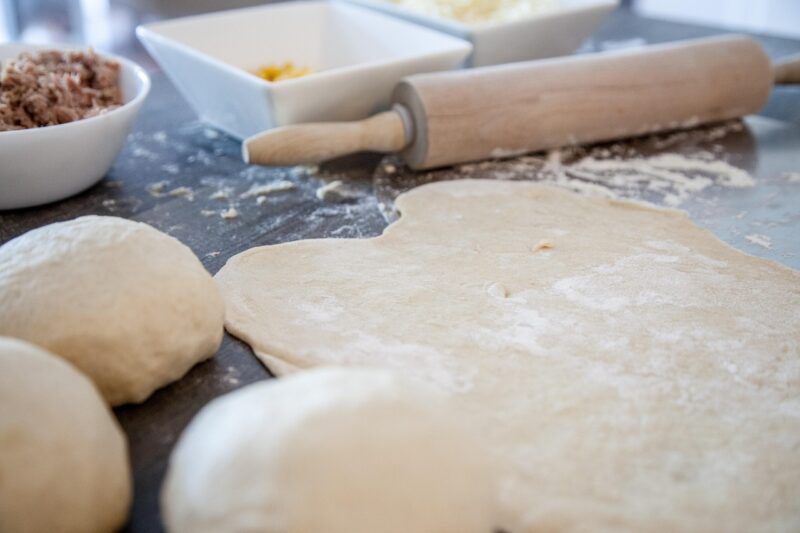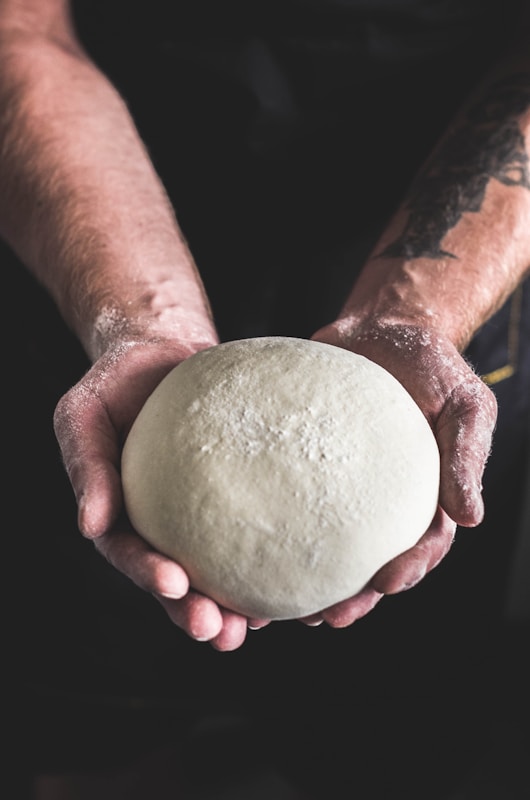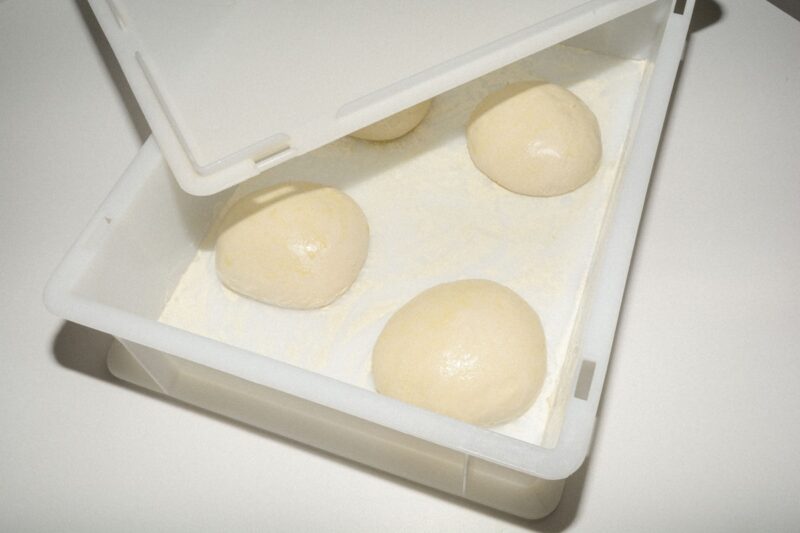Can you freeze pizza dough? The short answer is yes, but there are nuances to understand. In this blog post, we will explore the ins and outs of freezing pizza dough, providing you with detailed guidance, personal anecdotes, and practical tips to ensure your frozen dough is as good as fresh.
The Freezing Process: A How-To Guide
Freezing pizza dough is a practical way to prepare for a last-minute pizza night or to save resources when making more dough than necessary. Here’s how you can do it effectively:
Step-by-Step Instructions
Prepare the Dough: Follow your chosen pizza dough recipe until the first rise is complete. This usually takes about 1-2 hours, depending on the recipe and the room temperature.
Shape the Dough: After it has risen, punch it down to release air bubbles, then divide it into individual pizza portions or keep it whole, depending on your needs.
Pre-Shape: Gently shape the dough into a ball. If you’ve divided it, form each piece into a ball.
Oil the Surface: Lightly coat the dough with olive oil to prevent freezer burn and keep the dough moist.
Wrap Tightly: Wrap the dough in plastic wrap, ensuring it is airtight. For added protection, place the wrapped dough in a freezer bag or an airtight container.
Label and Freeze: Write the date and contents on the bag or container, then place it in the freezer. Pizza dough can typically be frozen for up to three months.
Thawing: When you’re ready to use the dough, move it from the freezer to the refrigerator for about 12-24 hours. This gradual thaw enhances flavor and texture. After it’s thawed, allow it to rest at room temperature for about 30 minutes before stretching it out.
Why Freeze Pizza Dough?
Understanding why freezing pizza dough is an excellent option will help solidify its place in your cooking routine. Here are several compelling reasons:
Convenience at Your Fingertips
Imagine craving pizza on a Wednesday night but lacking the time to make dough from scratch. By having frozen pizza dough at the ready, you can skip the preparation phase and focus on adding your favorite toppings.
Cost-Effectiveness
Making pizza at home is often significantly cheaper than ordering out, especially when you can maximize ingredient use. Freezing dough allows you to create larger batches, saving both your wallet and time spent shopping.
Wholesome Ingredients
Creating your own pizza dough means you have complete control over the ingredients. This allows you to avoid preservatives and additives often found in store-bought options.
Variety in Pizza Styles
With your frozen dough, you can experiment with various types of pizzas—classic, deep-dish, thin-crust, or even personal-sized ones. The options are practically limitless.
Common Pitfalls and Tips for Successful Freezing
While freezing pizza dough is generally straightforward, several common mistakes can affect the quality of your dough. Avoiding these will elevate your pizza-making game.
Don’t Skip the Oil
One of the biggest mistakes is failing to coat the dough in oil before freezing. This step is critical; it prevents the dough from drying out and ensures that your pizza crust remains as fresh as possible.
Proper Wrapping Matters
Using plastic wrap is essential, but overwrapping can trap excess air, leading to freezer burn. Make sure your wrapping technique is tight but not overly constrictive.
Thawing Overnight is Key
Quick thawing at room temperature might seem convenient, but it can lead to uneven texture. A slow thaw in the refrigerator preserves the dough’s integrity much better.
The Science Behind Freezing Dough
Understanding the science behind freezing pizza dough can be quite fascinating. Freezing essentially halts the fermentation process, keeping the dough stable. However, the yeast remains dormant and viable, so when properly thawed, it resumes its activity.
The Role of Yeast
When you freeze dough, the yeast cells go into a state of suspended animation. Depending on the conditions, some of these yeast cells may die off during freezing, but a healthy portion will survive to create that bubbly crust you desire.
Quality of Ingredients
Using high-quality ingredients initially makes a significant difference in the final product. If your flour was fresher and your yeast more active, it will yield better results even after freezing.
Gluten Development
As the dough freezes, the water in the dough forms ice crystals. These crystals can disrupt the gluten network, which is why it’s vital to follow the thawing instructions. Allowing the dough to come to temperature gradually helps mitigate this disruption.
Flavor Development: A Hidden Benefit
Interestingly, freezing pizza dough can enhance its flavor. The cold storage allows enzymes in the flour to continue breaking down proteins and sugars, creating complex flavors over time.
Consider Cold Fermentation
Cold fermentation is a technique that involves leaving the dough in the refrigerator for an extended period (up to 72 hours). If you prefer to freeze dough for long periods, think of it like a short version of cold fermentation. You will get a crust that tastes deeply complex.
Making Your Own Pizza: Inspiring Ideas
Now that you have your pizza dough ready, the next step is creativity. Here are some fabulous ways to bring your pizza to life, whether you’re using fresh or frozen dough.
Classic Margherita
A Margherita pizza, with its simple ingredients—fresh mozzarella, tomatoes, basil, and a drizzle of olive oil—highlights the quality of the dough. Fresh basil added right before serving elevates the dish.
BBQ Chicken
Using cooked chicken tossed in barbecue sauce as a topping can create a delicious and tangy alternative to traditional pizza. Add red onions and cilantro for a bit of crunch and brightness.
Pesto Veggie
Spread a layer of pesto instead of traditional tomato sauce and top with roasted vegetables like bell peppers, zucchini, and artichokes. Finish it off with a sprinkle of goat cheese for a creamy texture.
Breakfast Pizza
Who says pizza is just for dinner? Use your frozen dough to create a breakfast pizza topped with scrambled eggs, bacon or sausage, and your favorite cheeses. Season with fresh herbs like chives for a refreshing finish.
Dessert Pizza
Yes, dessert pizza is a thing! After baking, spread some Nutella or mascarpone cheese on the crust, add slices of fresh fruit, and finish with a drizzle of honey or a sprinkle of powdered sugar.
Storing Frozen Dough: Practical Storage Tips
Here are some practical tips to consider for storing your frozen pizza dough effectively:
Use Airtight Containers
Aside from plastic wrap, consider using airtight containers designed for freezing. They provide extra protection against freezer burn while also minimizing odor absorption.
Divide and Conquer
If you make multiple types of dough, it may be helpful to label each batch clearly. Use colored markers or stickers to distinguish between whole wheat, gluten-free, or traditional doughs.
Keep Track of Time
While pizza dough can last for about three months in the freezer, keeping a small calendar in your kitchen to track freezing dates can help maximize freshness.
Beyond Dough: Exploring Toppings and Sauce Opportunities
Making the best pizza goes beyond just the crust. Homemade sauces and toppings can vastly improve your overall experience.
Crafting Your Pizza Sauce
Instead of the jarred variety, try making your own pizza sauce using crushed tomatoes, garlic, olive oil, and a pinch of oregano. Simmer on low heat for 30 minutes to develop rich flavors.
Creative Topping Combinations
Feel free to think outside the box. From classic pepperoni and mushrooms to unique toppings like fig jam and prosciutto or caramelized onions and blue cheese, the sky is the limit.
Combining Flavors
Incorporating sweet and savory elements can lead to remarkable dishes. Consider toppings like apple slices with brie or spicy pepper slices with honey drizzle for an unexpected twist.
Final Thoughts: The Joy of Making Pizza
Freezing pizza dough opens a world of convenient, budget-friendly, and delicious possibilities. With the right techniques, you can ensure that your homemade meals taste as fresh as possible, even after time spent in the freezer.










